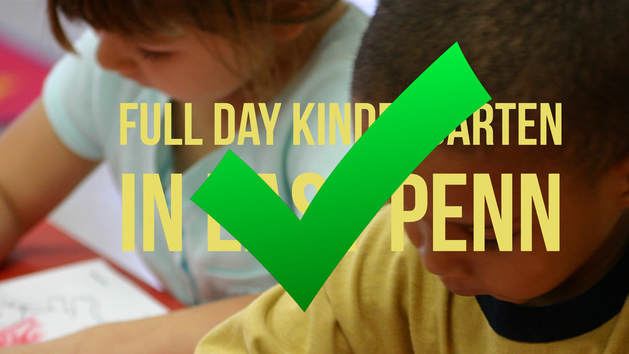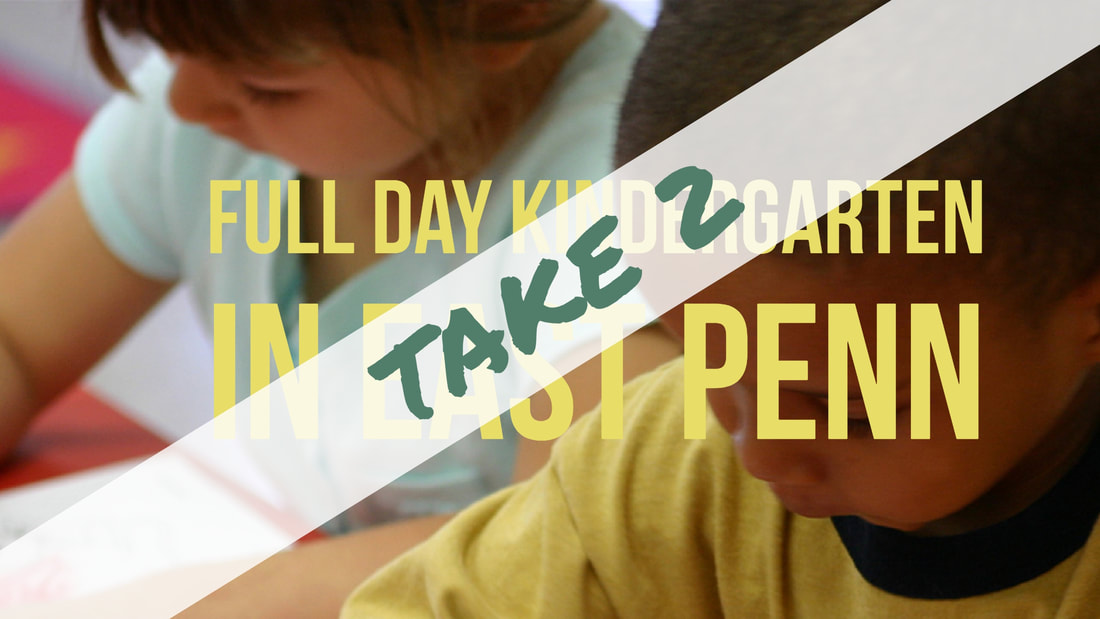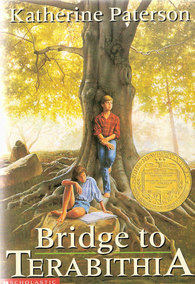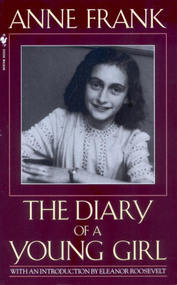|
I am pleased to report that the full day kindergarten proposal was passed by the East Penn school board Monday, by a vote to 6-3. It will be implemented next year. The approval caps almost two full years of planning, discussion, and debate on the issue. Ken Bacher, Alisa Bowman, Alan Earnshaw, and Paul Champagne joined me in voting in favor of the measure. Carol Allen, Chris Donatelli, and Chuck Ballard voted against it.
I'm sorry to report that the final debate over the issue was much more acrimonious than previous ones. Supporters of full day kindergarten were accused of lacking honor, and of being underhanded. I was called out by name as making "material misstatements of fact," which is of course a euphemism for lying. I stand by everything I have said about full day kindergarten, by the way. Like many contentious issues, there were persuasive arguments on both sides here. I believe the advantages of full day kindergarten outweigh some (perfectly valid) concerns about it. I greatly appreciate all the feedback the board received from the public on both sides of the issue. Media coverage of the meeting:
0 Comments
The East Penn School Board will again consider two proposals on full day kindergarten at their meeting on Monday. The first calls for implementation of the full day kindergarten plan, which was developed over the last two years by a special committee made up of educators, parents, and administrators. The second calls for a public referendum on full day kindergarten and sets a ceiling on the costs permitted for such a program.
Both of these proposals have been raised before. The former was defeated by a previous board in a 4-5 vote in October. The second was raised at a November board meeting, but there weren't even two board members who wanted to discuss it and therefore did not come to a vote. I have been a vocal supporter of the full day kindergarten proposal. I voted yes on the proposal the first time around, and plan to do so again at Monday's meeting. I believe that the plan before the board is well designed, that it is needed in our community, that research shows that it will be beneficial, and that its benefits outweigh its costs. I have discussed all of these issues in a collection of short blog posts and videos that you can access (and share) at: https://munson4eastpenn.org/fulldayk If you would like to speak to the board about full day kindergarten, you may do so during the public comment period held at the beginning of the meeting on Monday, December 11, at 7:30pm, in the board room at 800 Pine St. in Emmaus. 
The East Penn School Board will vote soon on whether to offer full day kindergarten to all families in the district. I’m strongly in favor of doing so. Here are four key benefits of full day kindergarten to our community:
1. Improves Readiness for Elementary School (and Beyond) Any good house requires a strong foundation. Even the most expensive, carefully designed home will collapse if it’s built on a cracked or crumbling base. Education is no different. We are spending a great deal of money and effort on improving curriculum and educational programs in the elementary, middle, and high school levels. But these improvements can’t pay dividends if students don’t start with a good school foundation. Full day kindergarten can provide this strong starting point far more effectively than our current half day programs. It increases the odds of students being able to read by the third grade, a key marker of future success in school. Would you be surprised to learn that some children in East Penn come into kindergarten having never even held a pencil or crayon? The time and more personalized attention afforded to full day kindergarten students begins to make up for these kinds of deficits, while also improving the readiness of all our children to be successful learners. 2. Creates Time for Purposive Play In a world of increasing pressure from standardized testing, and ever more specialized standards, it is easy to forget that children need time to absorb new ideas, learn more when lessons are active and playful, and learn most deeply when subjects are integrated and connected to one another. Half day kindergarten simply doesn’t provide enough time for this kind of education. I am impressed with the “living classroom” model for full day kindergarten. Our youngest students learn while they play. Full day kindergarten provides the time needed to incorporate all subjects daily into their activities, and the kids get the time they need to connect different subjects in meaningful ways. 3. Research Shows it Works Evaluating the effects of full day kindergarten programs is more complex than it might seem, because there are so many factors that impact student success. Overall, however, there is a growing body of evidence that full day kindergarten is better for the academic development of students than half day programs, whether measured immediately after kindergarten or measured years later. Such research ranges for case studies of individual school districts all the way to national data that includes information on tens of thousands of different kids (for examples, see here and here). Even in our own community, there is evidence of an immediate payoff from full day programs. The Parkland School District began full day kindergarten last year and already the proportion of their 550 kindergarten students who pass a diagnostic test on early reading skills has jumped from 65% to 80%. 4. Ensures Fairness to all Kids in the District East Penn actually has full day kindergarten already...but only for 2 of its 22 kindergarten classes. The full day programs at Lincoln and Alburtis are highly regarded and sought after by parents. The lucky few students who attend these full day programs go through a hidden admissions process, lotteries, and sometimes long waiting lists. This is unfair to the vast majority of students who could benefit from a full day program. It should be available to everyone in the district. My support of full day kindergarten is not one I come to lightly; my opinion is based on talking to many people in the district about the issue, researching it on my own, reading what published studies say about the advantages and costs of such programs, and participating in three formal school board presentations and discussions on the issue over the last eighteen months. On the basis of this work, I’ve come to the conclusion that full day kindergarten is right for our district. What do you think? This is one of several posts on the full day kindergarten proposal. You can learn more at:
Want to share a short video summary? Here ya go!  photo courtesy of Jos Browning, freeimages.com photo courtesy of Jos Browning, freeimages.com The Morning Call ran a good article yesterday about state officials pulling back some from their obsession with standardized testing. The Department of Education is cutting the equivalent of two days worth of state-mandated PSSA testing in grades three through eight. The weight given to the test scores in evaluating schools has already been (slightly) reduced. Keystone Exams, currently delayed as a graduation requirement until 2019, may be scrapped entirely. This is all good news. As I’ve written about before, the focus on poorly constructed and poorly used standardized tests as the primary-- and sometimes only-- means of evaluating educational outcomes is one of the major problems facing public education today. But the changes at the state level are still minor in comparison to the scope of the problem. Almost one out of four school days in East Penn are still devoted to either the PSSA or Keystone standardized tests (44 of 184 days). And this does not include all the additional instructional time lost to prepping for the test, or the inevitable R&R many teachers give their students after the tests. These tests continue to largely define the way curriculum and instruction is discussed in the district too. Recent changes to the sequence of high school science courses, for example, have been first and foremost a response to concerns about the (suspended) Keystone Exams in biology. I’m glad that the state is finally recognizing the destructive impact of their standardized test addiction. But that is just a start. Much more remains to be done, including at the local level. 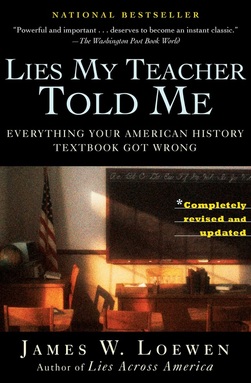 photo credit: Simon & Schuster photo credit: Simon & Schuster I saw a lot of pithy slogans and clever picture quotes on my social networks yesterday pointing out that the voyages of Christopher Columbus, which we celebrate with a national holiday, also brought with them evils like racism and genocide. Fair enough, and true enough. But one of the things I find tiring about these kind of online slogans, on subjects ranging from Columbus Day to gun control, abortion to celebrating Christmas, is that they so often reduce our rich and fascinating history to a few sound bites meant to “prove” that one view of the world is better than another point of view. With this in mind, let me recommend a book that strongly influenced my ideas about education when I read it more than fifteen years ago: Lies My Teacher Told Me, by James Loewen. The book is based on the author’s careful study of the twelve history textbooks most commonly used in American high schools, including all three textbooks being used in American Studies I and II at Emmaus High School. Based on this research, Lies My Teacher Told Me is a critique of the way American history is taught in our schools. The book devotes a chapter to Christopher Columbus and the European discovery of the Americas, showing how many of historical figures, events, and motivations that are most important to the story never appear in our textbooks. Students are left with a strong sense that Columbus was a hero, but very little sense of the actual history of that time. “When textbooks paint simplistic portraits of a pious, heroic Columbus,” Loewen concludes, “they provide feel-good history that bores everyone” (p.90). My favorite section of the book, however, is the focus on Helen Keller in the introductory chapter. I knew what most Americans do about Keller: She was a blind and deaf girl whose drive and determination allowed her to overcome these handicaps and bravely fight for womens’ right to vote. It turns out that all of that is true. But reading Loewen’s book was the first time I learned she was also a radical socialist who actively and publicly promoted communism in the United States for much of her adult life. My own history teachers in school never taught me that! As Loewen describes, “historians and filmmakers have disregarded her actual biography and left out the lessons she specifically asked us to learn from it. Keller, who struggled so valiantly to learn to speak, has been made mute by history” (pp.12-13). What makes Loewen’s book powerful, however, are not his corrections to the sanitized history presented in our school textbooks, but his clear explanation for why this problem matters to all of us. History textbooks, he argues, have been written to make historical figures into heroes and villains in the mold of Disney or video game characters: consistent, one-dimensional, and easy to understand. This telling of history is not only boring, but also dangerous because real heroes (and villains) never look like these caricatures. Helen Keller was heroic in many ways, but she also had many flaws-- like all of us, and like all heroes. Lacking knowledge of the richness, contradictions and tensions in historical figures makes it hard for students to identify heroes and villains in their own lives, or in themselves. Lies My Teacher Told Me has its weaknesses like any book. It can be repetitive at times, does not provide a comprehensive history of its own, and is too preachy for my tastes in some places. But overall it offers an engaging and eye-opening look at not only some central stories in American history, but also the many motivations and purposes that define our textbooks aside from teaching historical realities. You can pick up a copy for yourself at the Emmaus Public Library, the Lower Macungie Library, or order one from our district’s only independent bookstore, Let’s Play Books. Happy reading, and let me know what you think! 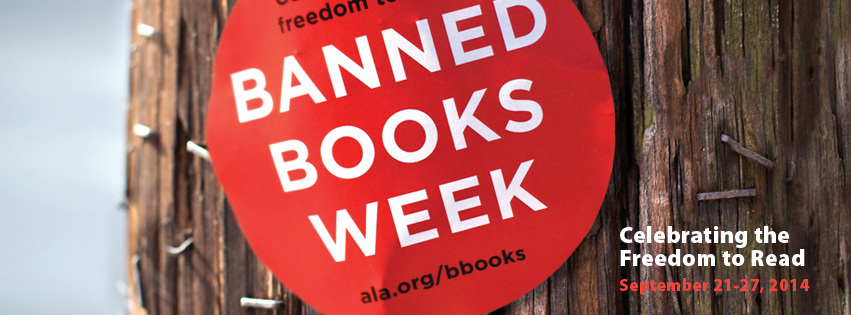 Artwork courtesy of the American Library Association Artwork courtesy of the American Library Association This week is Banned Book Week, sponsored by The American Library Association along with the Library of Congress, the National Council of Teachers of English, and almost a dozen other organizations. The event is designed both to raise awareness of continued censorship threats and celebrate the contributions to history, literature and culture made by many books that people frequently try to ban. The top ten most frequently challenged books in 2013 include many aimed at students, including Captain Underpants (by Dav Pilkey), The Hunger Games (by Suzanne Collins), Looking for Alaska (by John Green), and the Perks of Being a Wallflower (by Stephen Chbosky). We have seen books challenged in our own district in the last few years, so this is neither an idle nor distant issue. There are those who have tried to ban some of my children's favorite books, including the Hunger Games, the Harry Potter series, and The Perks of Being a Wallflower. And books that were formative in my own education, including A Bridge to Terabithia, A Catcher in the Rye, and Fahrenheit 451, have been favorites of censors for many years. A hallmark of a healthy democracy-- and of a vibrant community-- is tolerance for a wide range of viewpoints, including viewpoints about which there might be strong disagreement. To me, Banned Book Week is a celebration of the importance of the First Amendment to our democracy and the ways in which reading and engaging with a range of ideas can enrich our lives. Let's Play Books, the only independent bookstore in our district, is participating in Banned Book Week. Go visit them in the Emmaus triangle. You can also visit the official Banned Book Week website to find a variety of local events, online quizzes, social media badges, and other ways you can get involved. But most importantly, enjoy a good book this week!  photo credit: photosteve101 via photopin cc photo credit: photosteve101 via photopin cc When we moved to East Penn a number of years ago, my wife and I were shocked to learn that all elementary students are dismissed early every Wednesday of the school year. Both of us work outside the home, so this quirk of the district calendar sent us scrambling to provide care for our daughter on all those Wednesday afternoons. We hired a babysitter some weeks, and a retired neighbor helped us out on other days. Since then, we’ve cobbled together something a little different each year, combining changes to our work schedules with daycare, babysitters, and help from friends and neighbors. Next year, however, might be different. A New Wednesday Schedule In response to growing concerns about half-day Wednesdays, the district administration has developed a proposal to make the elementary school day the same each day of the week. The main element of the plan is changing the daily schedule for both students and teachers. Students would start five minutes later (9:00am instead of 8:55am) and be dismissed ten minutes earlier most days (3:20pm instead of 3:30pm) and much later on Wednesdays (3:20pm instead of 1:30pm). Official teacher workdays would be the same length as they are now-- 7 hours and 20 minutes-- but would both begin and end earlier. Full details, including the proposed new kindergarten schedule, is available in the presentation the administration gave to the school board last Monday. Advantages & Disadvantages There are a number of potential advantages to this new schedule:
There are also a number of potential disadvantages to the change:
Some Recent History The administration proposed changing the Wednesday afternoon schedule seven years ago, but the proposal was unanimously turned down by the school board at the time-- despite a survey that showed 71% of parents supported it. But that proposal differed from the current one in several crucial ways. First, the older proposal called for a later start time for students (9:15am instead of 9:00am). Second, it called for additional hiring that would have cost more than $472,000 annually (compared to a maximum of $70,000 for the current proposal). Given these differences, I believe this new proposal stands a much better chance with my colleagues on the school board than the one in 2007. A Change for the Good? A lot has changed in our schools and in our community in the generation since half day Wednesdays were first instituted! Weighing the advantages and disadvantages of this new proposal, I am cautiously optimistic that this change in schedule can be good for everyone: students, parents, teachers, and the district administration. The changes would definitely disrupt the carefully laid plans my wife and I have for getting our 3rd grader to and from school each day, at least in the short term. But I’m sure we could adapt. I want to hear from others before making up my mind on this issue, though. How do you view these proposed changes? Are there potential advantages and disadvantages I haven’t yet considered?  photo credit: Benjamin Chun via photopin cc photo credit: Benjamin Chun via photopin cc Two recent issues in our school district-- the tough budget and the many snow days-- have reminded me of the many concrete ways in which the relentless obsession with standardized testing hurts our ability to provide the highest quality education to our children. Wasted Money In terms of the budget, the harsh winter has added to the usual list of factors demanding our district's dollars. It is in this context that Governor Corbett has proposed increasing state spending on standardized testing by 8.6% next year, to over $58 million. By contrast, his administration has proposed zero increase to basic education, for funding things like more teachers, new textbooks, and better lab equipment. Instead of helping local taxpayers afford the things that can improve learning, the Corbett administration is focusing on those things that (sort of) measure it. State spending on these tests is only a small part of the overall education budget, but is still millions that could be put to far better use in the classroom. Or even to help defray the extra snow removal costs this year. (An interesting sidenote that adds some insult to injury: a good portion of that $58 million for standardized testing will go to the Data Recognition Corporation, a private firm in Minnesota to which the state outsourced the development and administration of our standardized tests.) Wasted Classroom Time In terms of snow days, bad weather has led to schools being closed now on eleven different occasions, and delayed school on many more. It is in this context that I took a look at the recently revised school calendar for the rest of the year. By my quick count, there are a total of 69 instructional days left, and standardized testing is scheduled for 25 of those. That's right: our schools will be focused on standardized tests more than one out of three of the remaining school days. To be fair, not every student will be taking tests on every one of those days. But many will. And those 25 days don't include the substantial time devoted to teaching the mechanics of the tests and the best strategies for approaching them. Imagine how much more could be accomplished in the classroom this year if even half of all the time set aside for standardized testing in the coming months were freed up for real instruction in science, math, language arts, music, and other substantive subjects of value. Or enrichment programs that build on the curriculum already being implemented. Or, frankly, just reading a good book. Where to Go From Here Don't get me wrong, I'm not opposed in principle to standardized tests. They can play a useful role in student placement, program evaluation, and so forth. The problem is that these measures of instruction are quickly becoming the goal of instruction itself. This is reflected in where our money goes and how the precious few hours in the classroom will be spent over the remainder of this school year. What can be done? Some parents in Pittsburgh are simply opting out of standardized testing, but I suspect a more collective effort is needed for significant change. I welcome your ideas about concrete things we might do at the local level to resist the takeover of these tests. And if you are interested in learning more about the impact standardized testing is having on our schools, please attend a forum of Muhlenberg College faculty who will present research findings on the impact of No Child Left Behind, the 2001 federal law that greatly accelerated the push to reliance on standardized tests: Thursday, March 20th, at 7pm at the East Penn School District administrative office, 800 Pine St. in Emmaus. 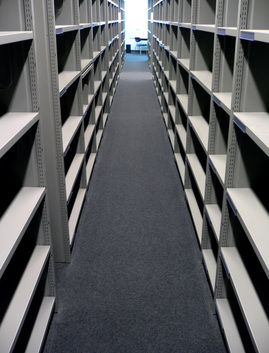 photo credit: svenwerk via photopin cc photo credit: svenwerk via photopin cc The Diary of Anne Frank is a brilliant, harrowing, and ultimately heart-wrenching account of a Jewish girl's attempt to escape the Nazis and the Holocaust during WWII. Last May, a parent in Michigan asked her district to eliminate this famous book from the curriculum, arguing that one short passage in the 320-page diary is too sexually explicit for students. This same logic was used last fall here in the East Penn District in demanding two books be removed from the long list of summer reading options given to parents and students (Prep and The Electric Kool-Aid Acid Test). One of my opponents called those who were uncomfortable with such censorship "hateful Marxists promoting an agenda designed to corrupt our children." I don't believe name calling is the proper way to address differences of opinion. But more importantly, I believe parents should be the primary decision-makers concerning what their children read, not school district administrators. In the case of our own district, the East Penn summer reading list explicitly states that teachers "encourage parents to read...book descriptions carefully with their children and assist them in selecting interesting, appropriate titles." We should empower parents to make informed decisions about books by noting potentially objectionable material in the descriptions on this list, not banning books from the list altogether. I have deep concerns about the slippery slope of censorship. The First Amendment is critical to our democracy precisely because it recognizes that there is no one, objective standard that speech can be judged against. If one filthy passage in a novel makes the whole work "objectionable," then how long does the passage have to be? What words or descriptions are "pornographic" and which are merely uncomfortable? And what about "objectionable" political ideas? Or religious ideas? Should we ban from the curriculum all those books that are objectionable to someone in any of these ways too? Katherine Paterson, author of the prize-winning (and much banned) book A Bridge to Terabithia perhaps puts it best when she writes: "All of us can think of a book...that we hope none of our children or any other children have taken off the shelf. But if I have the right to remove that book from the shelf - that work I abhor - then you also have exactly the same right and so does everyone else. And then we have no books left on the shelf for any of us." A quick glance at the American Library Association's list of most frequently banned books is a reminder of just how empty our shelves and reading lists might be if we try to eliminate everything to which anyone objects.
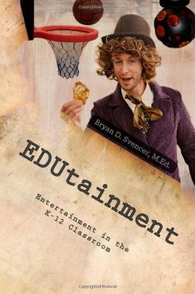 I've written several times now about the need for innovative approaches to education that recognize and embrace the information revolution. There are certainly teachers that are meeting this challenge. There is a growing movement of educators adopting "flipped classrooms" in which traditional classroom lessons and traditional homework assignments are inverted: homework consists of watching lectures or reading explanations at home, and classroom time is spent practicing what was learned at home in problem-solving sessions. The inverted classroom approach takes advantage of technological innovations such as widespread internet access and online video, makes increased use of teacher expertise in helping students work through material at their own pace, and more closely mirrors the new kinds of job skills students will need once they graduate. Of course, this isn't the only approach that can work. Right here in our own district Brian Svencer-- a 4th grade teacher at Lincoln Elementary-- has written a book about his high-energy approach to the classroom that engages students by integrating traditional curricular content into new media and forms of entertainment students already enjoy and are comfortable with. He will be discussing his approach on The Breaking Free Show this Monday (October 21st) at 1pm if you want to learn more (or call into the show: 919-518-9773).
Both of these examples of teaching innovation rely on the creativity and professionalism of teachers. Ultimately, no one "method" will be right for every teacher, or every student, or every classroom. What we need most is highly intelligent, motivated teachers who can adapt and excel in a changing educational environment. And as much as I am grateful for the many excellent teachers we have in our district (my own children have had several), I also know we can do even better. Dr. Mehta, at Harvard's Graduate School of Education, has commented on the ways in which improved teacher training and professionalization will translate into improved public education (full disclosure: Dr. Mehta and I were colleagues in graduate school). He notes that teachers in some of the world's best public school systems-- in places like Japan, Finland, and Canada-- are drawn primarily from the top third of their college classes. By contrast, most teachers in the United States come from the bottom 60 percent. And there is no rigorous professional licensing system for teachers in this country akin to that in fields like medicine, law, engineering, and architecture. Transforming public education to meet the demands of the information revolution will depend, in part, on our ability to transform teacher education, as well as our willingness to treat teachers (and have teachers respond) as the full professionals that they are. We need to raise the bar. |
Details
Categories
All
Archives
December 2017
|
